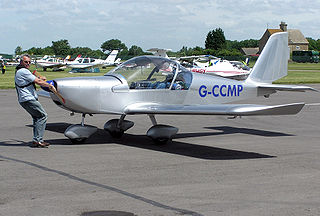The Bristol Biplane Type 'T', sometimes called the Challenger-Dickson Biplane, was a derivative of the Bristol Boxkite. It was built in 1911 by the British and Colonial Aeroplane Company and was designed as a cross-country racing aircraft for Maurice Tabuteau.

The British Army Aeroplane No 1 or sometimes Cody 1 was a biplane built by Samuel Franklin Cody in 1907 at the Army Balloon Factory at Farnborough. It made the first recognised powered and sustained flight in the United Kingdom on 16 October 1908.
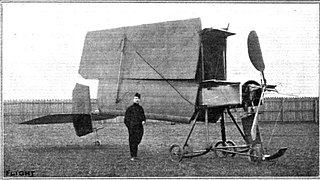
This article is about the Breguet aircraft of 1910-1913. For the unrelated aircraft of the same designation flown in World War I, see Breguet Bre.4 and Breguet Bre.5.

The Farman III, also known as the Henry Farman 1909 biplane, was an early French aircraft designed and built by Henry Farman in 1909. Its design was widely imitated, so much so that aircraft of similar layout were generally referred to as being of the "Farman" type.
The Latécoère 14 and Latécoère 16 were similar French passenger and postal aircraft of advanced design built in 1923. They differed chiefly in engine power. Only one of each was constructed. The 14's type number was reused for an unrelated parasol wing prototype that was basis of the more successful Latécoère 17.

The Santos-Dumont Demoiselle was a series of aircraft built in France by world aviation pioneer Alberto Santos-Dumont. They were light-weight monoplanes with a wire-braced wing mounted above an open-framework fuselage built from bamboo. The pilot's seat was below the wing and between the main wheels of the undercarriage. The rear end of the boom carried a tailwheel and a cruciform tail.
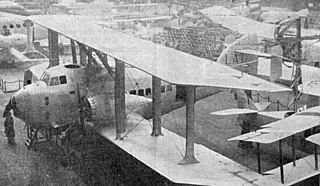
The Latécoère 4 was a three-engined, 15-passenger biplane built in France in the early 1920s. It proved difficult to fly and was discontinued, though a second machine was completed as the Latécoère 5 bomber.
The Short No.2 was an early British aircraft built by Short Brothers for J.T.C. Moore-Brabazon. It was used by him to win the £1,000 prize offered by the Daily Mail newspaper for the first closed-circuit flight of over a mile (1.6 km) to be made in a British aircraft.
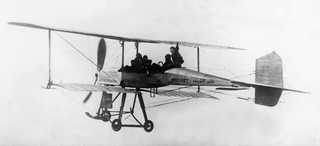
The Breguet Type IV was an aircraft built by Breguet Aviation. It was first flown in 1911, and was the first Breguet aircraft to be produced in quantity. It was used by the French Army and the R.F.C.. It is notable for the extensive use of metal in its construction, unusual in an aircraft of its time.

The Howard Wright 1909 Biplane was an early British experimental aircraft designed and built by Howard T Wright. It was displayed at the first Aero Show at Olympia in March 1909, and although only one was built, it was the first of a series of aircraft built by Wright that were to earn him brief fame as one of England's foremost aircraft manufacturers in the early years of flight.

The Cody Michelin Cup Biplane was an experimental aircraft designed and built in Britain during 1910 by Samuel Franklin Cody, a prominent showman and aviation pioneer. Cody had worked with the British Army on experiments with man-lifting kites and in October 1908 had successfully built and flown the British Army Aeroplane No 1, making the first officially verified powered flight in the United Kingdom. Cody broke the existing endurance record twice in the aircraft, the second flight, made on 31 December 1910, winning him the Michelin Cup for the longest-lasting flight made over a closed circuit in the United Kingdom before the end of the year.
The Vickers E.F.B.1 'Destroyer' was an early British military aircraft prototype. Although not itself a success, the design was considered worth developing, and a series of similar aircraft were produced in prototype form, eventually leading to the Vickers F.B.5 "Gunbus", which saw widespread service during World War I.
The Grahame-White Type VI was an early British military aircraft manufactured by the Grahame-White Aviation Company. Only one was built but after an abortive flight development was abandoned.
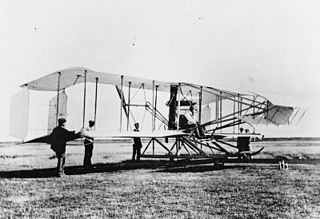
The Short No.1 biplane was an early British aircraft built in 1909 by Short Brothers. Although it never flew, it was notable for being the first aircraft designed by Horace Short.

The Short S.36 was a British two-seat tractor biplane, built by Short Brothers for Frank McClean in 1911. It was later developed into the Short S.41 and Short S.45, which were the first of a long series of similar aircraft built for the RNAS and RFC.

The Hanriot 1909 monoplane was an early French aircraft constructed by Rene Hanriot, a successful automobile racer.

The Caudron Type A was the first successful aircraft built by René Caudron and his brother Gaston. During 1910 the Caudron brothers were briefly associated with the Société Anonyme Français d'Avaiation (S.A.F.A.), and an example of the type was exhibited at the 1910 Paris Aero Salon as the S.A.F.A. Biplane.
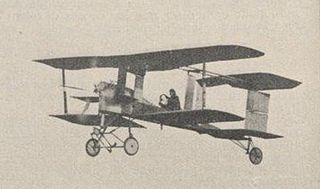
The Breguet Type II was the second fixed-wing aircraft design produced by Louis Breguet. Built during late 1909, it was soon discarded in favour of his next design, the Breguet Type III
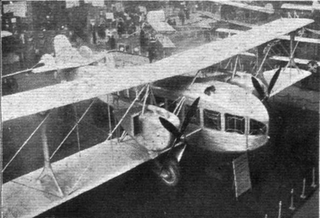
The Breguet Leviathan was a family of large all-metal biplane aircraft built in France in the early 1920s. The Breguet XX and XXI were notable for being powered by Breguet-Bugatti multiple engines, in two forms. The Breguet XXI was powered by individual Breguet-Bugatti U.16 engines initially and Lorraine-Dietrich 8b engines in tandem later. The Breguet XXII had accommodation for about twenty passengers and was destroyed during a 1923 transport aircraft competition. Development of all three aircraft types was halted largely due to technical issues with power-plants and aircraft structure.
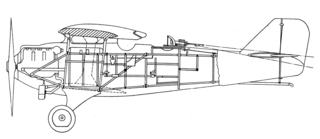
The Breguet 25 or XXV was a French two seat fighter from 1925. It was heavily armed, carrying seven machine guns.

